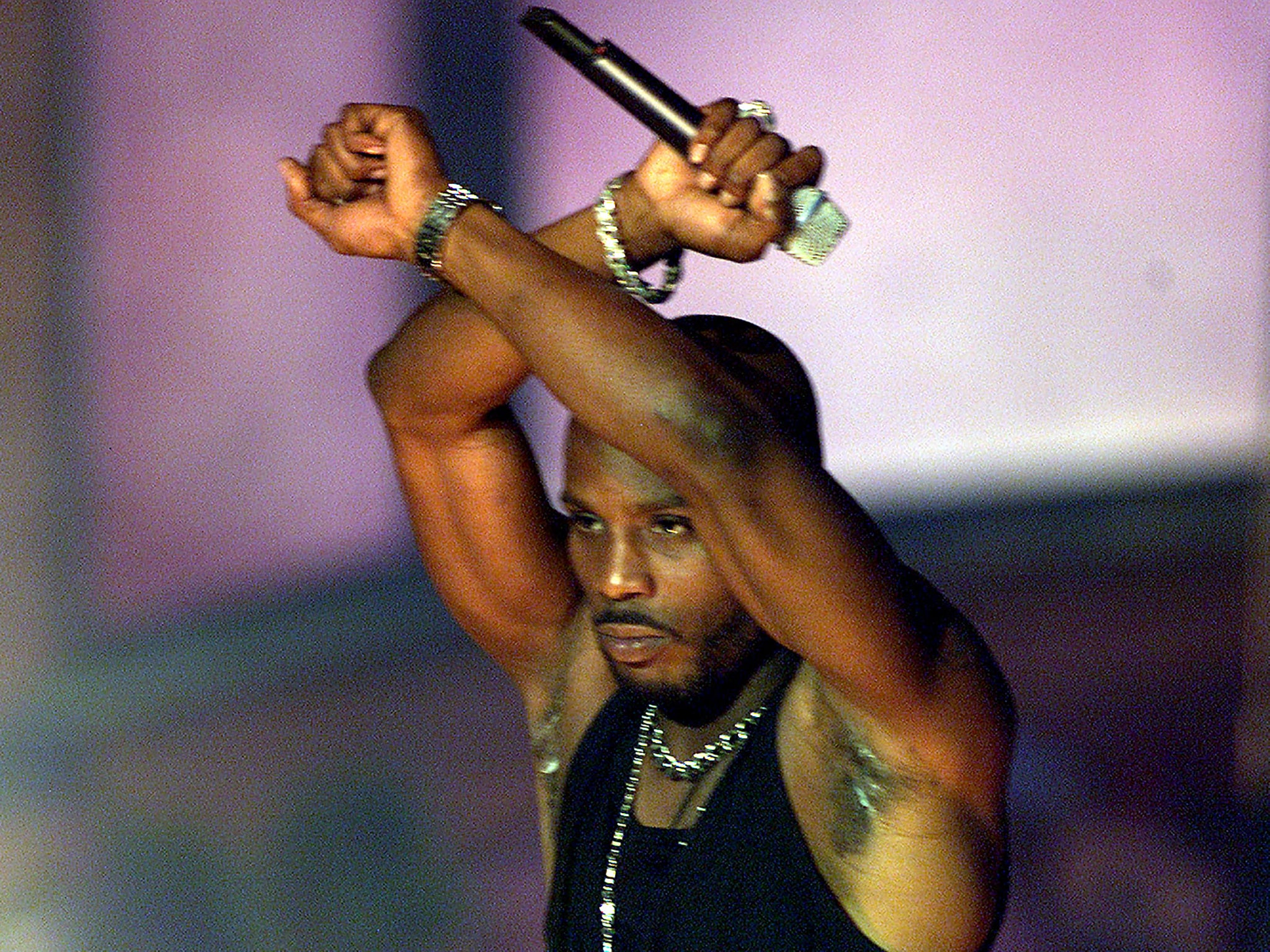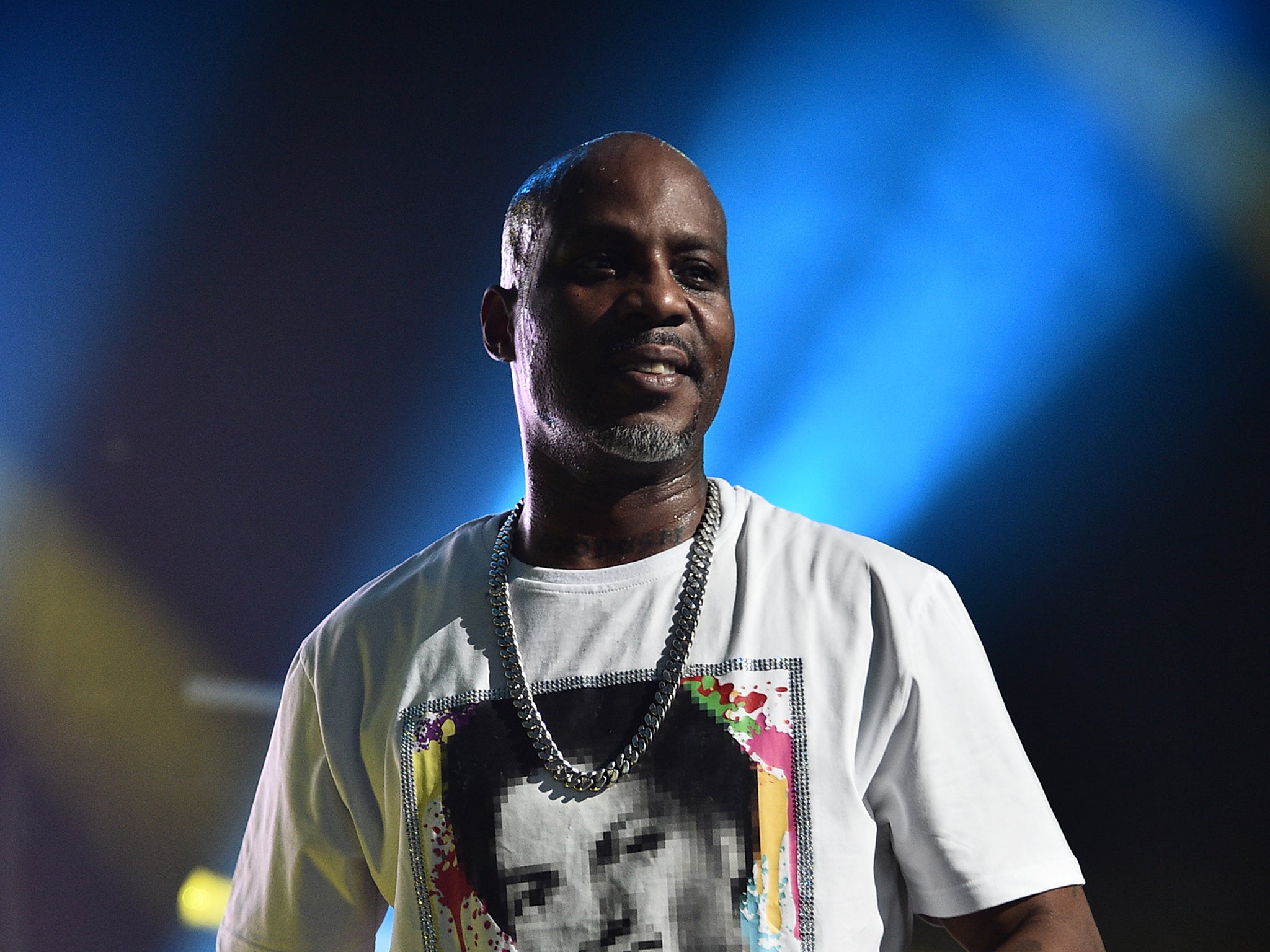DMX was a rap juggernaut who preached faith and resilience
The rapper, who has died aged 50, wore his trauma on his sleeve and more than deserved his redemption, writes Will Lavin

Your support helps us to tell the story
From reproductive rights to climate change to Big Tech, The Independent is on the ground when the story is developing. Whether it's investigating the financials of Elon Musk's pro-Trump PAC or producing our latest documentary, 'The A Word', which shines a light on the American women fighting for reproductive rights, we know how important it is to parse out the facts from the messaging.
At such a critical moment in US history, we need reporters on the ground. Your donation allows us to keep sending journalists to speak to both sides of the story.
The Independent is trusted by Americans across the entire political spectrum. And unlike many other quality news outlets, we choose not to lock Americans out of our reporting and analysis with paywalls. We believe quality journalism should be available to everyone, paid for by those who can afford it.
Your support makes all the difference.Earl Simmons, better known as DMX (an abbreviation of Dark Man X), was more than just a rapper. He was a street preacher with an immovable faith in God, whose rags-to-riches story gave hope to the hopeless and inspired a new generation of rap fans.
The musician, who has died at the age of 50, was forced to grow up quickly. Born in Mount Vernon, New York in 1970, he was abandoned by his father at a young age, and his mother struggled to raise him. He would hop between an abusive household, boys’ homes and juvenile institutions in Yonkers. His journey from a smart and mischievous child to a troubled teen involved car chases, robberies and periods of homelessness. But a passion for rapping gave him purpose. His love of stray dogs gave him companionship, and later provided inspiration for his trademark barking on record.
Known for his high-octane anthems and deeply introspective raps, DMX gained attention after being featured in The Source magazine’s “Unsigned” column, and later rose to prominence upon the arrival of his explosive major label debut, It’s Dark and Hell is Hot. Released in May 1998 on powerhouse label Def Jam, the album spearheaded a resurgence of hardcore rap, earning critical and commercial success at a time when hip hop was dominated by a more upbeat sound (known as the “jiggy” era).
Selling over four million copies in the US in just two years and topping the Billboard chart, It’s Dark and Hell is Hot spawned the classic Swizz Beatz-produced “Ruff Ryders Anthem”. It served as a rallying cry for DMX’s label, Ruff Ryders Entertainment, and his extended music family, which included fellow artists Eve and The Lox.
That same year, DMX released his second album, Flesh of My Flesh, Blood of My Blood, which also reached the Billboard top spot. It marked the first time a rapper had released two No 1 albums under the same name in less than a year. Over the next decade, he would release a further five albums. Three of those also debuted at No 1, including 2003’s Grand Champ, on which DMX skirted controversy with “Where the Hood At?”, which featured one of rap’s most blatant homophobic diatribes, but also some of the genre’s most homoerotic lyrics.
What struck people the most about DMX was his honesty. As with 2Pac, you never doubted the message in his music. He unashamedly wore his heart on his sleeve, even if that meant confessing his personal struggles. He understood that he was a work in progress and a product of his environment. He felt it was important to put that on record, not only as a form of therapy but as a guide for others to life’s many obstacles. X was unafraid to step into the darkness and tackle his demons head-on, confident that God was by his side. Each of his albums featured a prayer, which softened the harsh growl of his voice that was caused in part by asthma. It drew people to him. The suffering he exposed in his music helped others make sense of the pain in their own lives.
DMX was also a talented actor, starring alongside Aaliyah and Jet Li in 2000’s Romeo Must Die, and appearing in the films Exit Wounds (2001) and Cradle 2 the Grave (2003). His most memorable role, however, was his very first: in the cult hip-hop movie Belly. Directed by music video guru Hype Williams, the 1998 film – which also starred rapper Nas and TLC singer T-Boz – saw X deliver an impactful and engaging performance as Tommy “Buns” Bundy, a gangster who undergoes a spiritual transformation.
He married his childhood sweetheart Tashera Simmons in 1999, and the couple had four children. They divorced in 2010. DMX was the father of 15 children in total, some of whom came from extramarital affairs during his marriage to Simmons. He later filed for Chapter 11 bankruptcy, citing his child support obligations as his priority claim.
DMX’s long history of substance abuse began when he accidentally smoked a blunt laced with cocaine at the age of 14. In subsequent years, he was in and out of prison for a variety of drug-related charges. Other run-ins with the law saw him arrested for reckless and unlicensed driving, resisting arrest, drug possession and identity falsification.
Enjoy unlimited access to 100 million ad-free songs and podcasts with Amazon Music
Sign up now for a 4 month free trial (3 months for non-Prime members)
Enjoy unlimited access to 100 million ad-free songs and podcasts with Amazon Music
Sign up now for a 4 month free trial (3 months for non-Prime members)
In the opening lines of his 1998 hit single “Slippin’”, X said he could see a brighter day on the horizon. “I’ve been through mad different phases, like mazes to find my way/ And now I know that happy days are not far away,” he raps, vowing throughout that he’s going to lift himself up and become a better person.

He appeared to be on that road to redemption, having been released from prison in January 2019 after serving time for federal tax evasion charges. His comeback included a 20th anniversary tour for his debut album, and at the time of his death he was working on a follow-up to 2012’s Undisputed. Speaking in various interviews, he said that the record was set to include features from Lil Wayne, Snoop Dogg, Alicia Keys, Usher, and the late Pop Smoke. He also revealed he had collaborated with U2’s Bono on a track called “Skyscrapers”.
All DMX wanted to do was soar, just like he said on his 1998 album cut “Let Me Fly”. But while he hit heights of fame that very few ever reach, his spirit was often grounded by childhood trauma, internal demons and ongoing health issues. For as much as he gave the world, he deserved better.



Join our commenting forum
Join thought-provoking conversations, follow other Independent readers and see their replies
Comments